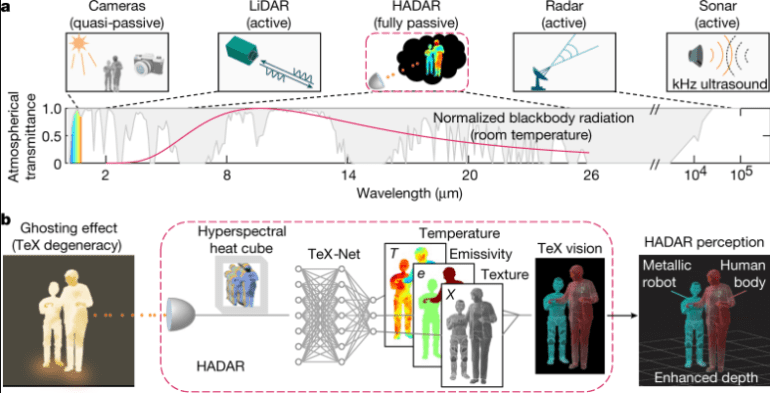TL;DR:
- Purdue University unveils HADAR, a revolutionary AI vision technology.
- HADAR combines thermal physics, infrared imaging, and machine learning for unprecedented night vision capabilities.
- Overcomes limitations of traditional thermal imaging, providing clear texture, depth, and physical attributes even in darkness.
- Initial applications include robotics, autonomous vehicles, and human interaction in complex environments.
- Potential for widespread impact in agriculture, defense, geosciences, healthcare, and wildlife monitoring.
- Challenges include optimizing hardware size and data collection speed for practical use.
Main AI News:
Building upon their pioneering research, the brilliant minds at Purdue University have unlocked a whole new world of possibilities for AI vision. HADAR (heat-assisted detection and ranging), the cutting-edge method developed by Zubin Jacob and Fanglin Bao, has surpassed all expectations, making night vision as clear and precise as daytime perception.
Through the ingenious combination of thermal physics, infrared imaging, and machine learning, HADAR has tackled the longstanding challenges of night vision. By overcoming the “ghosting effect” inherent in traditional thermal imaging, it vividly recovers textures, depth, and physical attributes in any scene, regardless of darkness or weather conditions.
This groundbreaking technology has far-reaching applications, with initial implementations set to transform the world of robotics and autonomous systems. Picture a future where self-driving cars and robots operate flawlessly, interacting with humans in complex environments, all thanks to HADAR’s unparalleled vision.
The potential of HADAR extends beyond these immediate applications. With further development, it could revolutionize agriculture, defense, geosciences, healthcare, and wildlife monitoring, leaving no domain untouched by its transformative capabilities.
As the team refines HADAR, they are mindful of two crucial aspects: the size of the hardware and data collection speed. The current sensor, while effective, needs to be more compact and agile to accommodate diverse real-world scenarios. Enhancing the frame rate is another priority to match the demands of autonomous vehicles and high-speed robotics.
Zubin Jacob and Fanglin Bao’s visionary work has propelled AI perception into uncharted territories, defying the boundaries of day and night. The era of machines seeing through the darkness like broad daylight is upon us, and HADAR stands at the forefront of this revolution. As the journey continues, expect the unexpected, as HADAR reshapes the very essence of AI vision, ushering in a new era of possibilities.
Conclusion:
The introduction of HADAR marks a significant leap in AI vision capabilities, enabling machines to perceive their surroundings in pitch darkness with the same clarity as broad daylight. Its potential applications across various industries open up new avenues for innovation and automation, promising transformative impacts on the market. However, addressing the challenges of hardware size and data collection speed will be essential for realizing HADAR’s full potential and widespread adoption in real-world scenarios. Businesses should keep a close eye on this technology, as it could revolutionize how AI systems interact with the world, paving the way for new opportunities and advancements in the market.

